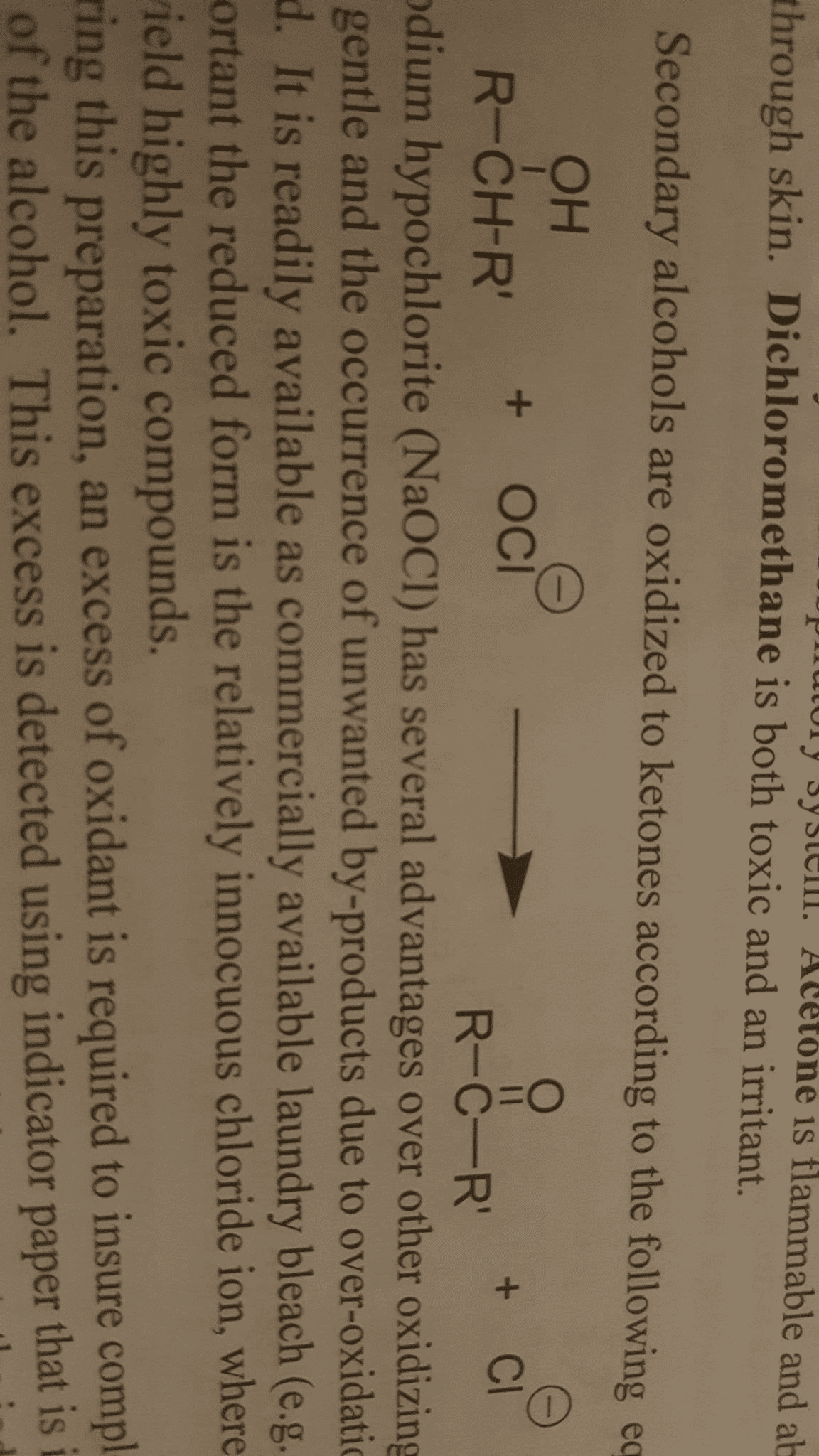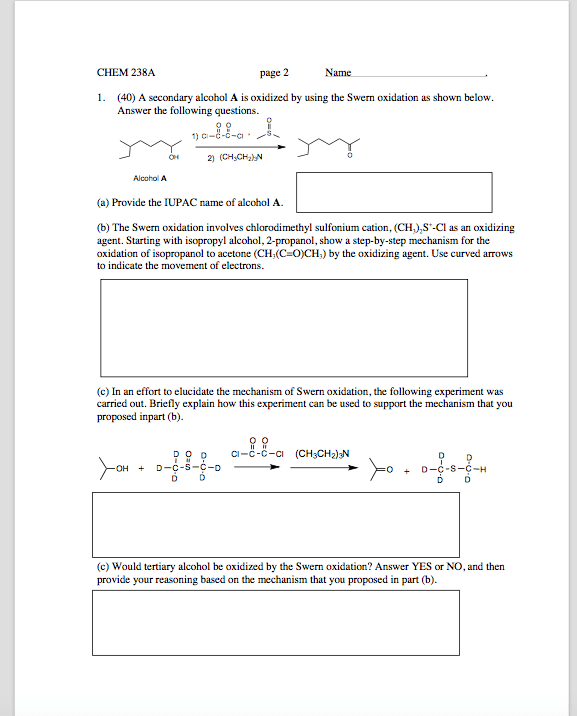CHEM 222 Lecture Notes - Lecture 1: Spatula, Pipette, Ketone
Document Summary
The purpose of the experiment was to perform an oxidation reaction by oxidizing cyclohexanol, a secondary alcohol, to cyclohexanone using sodium hypochlorite (household bleach) as the oxidizing agent. Tlc was used to verify the identity of the products. The ketone product, cyclohexanone, was characterized according to the ir spectrum. Oxidation is a process in which an atom loses an electron and therefore increases its oxidation number. Oxidation of a primary alcohol produces aldehydes, oxidation of a secondary alcohol produces ketones, and oxidation of tertiary alcohols cannot be oxidized under standard conditions since this type of reaction requires the breakage of carbon-carbon bonds. The oxidation agent used in this reaction to oxidize cyclohexanol to cyclohexanone is sodium hypochlorite, household bleach. The reason why sodium hypochlorite is used instead of other oxidizing agents such as chromic acid is because, sodium hypochlorite is a more benign oxidizing agent. This reaction carries importance in a sense that oxidation of alcohols are commonly used commercially.



